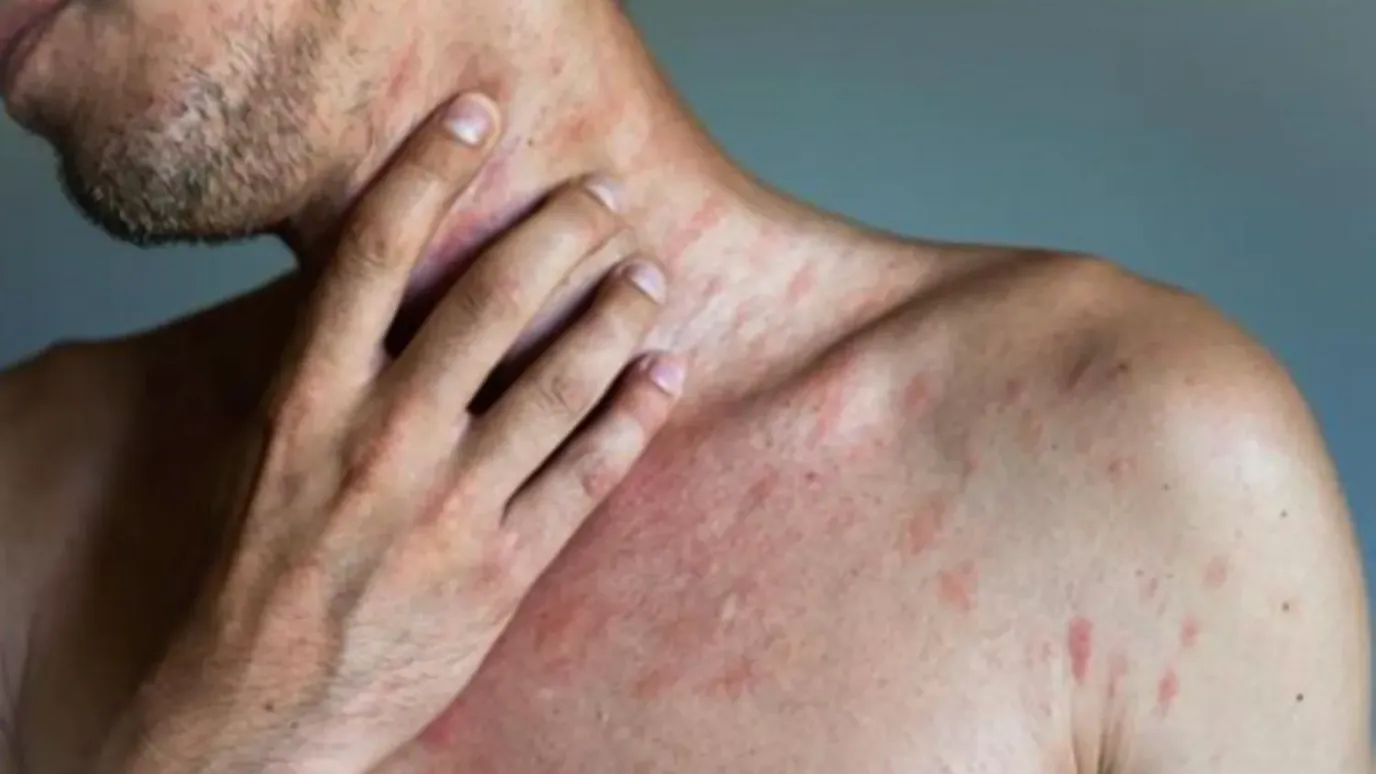Imagine waking up at 2 a.m. with your body covered in hives, your throat closing, and your heart racing. What’s to blame? Not food poisoning, not a bee sting—but that delicious burger you had for dinner.
Welcome to the bizarre world of Alpha-Gal Syndrome (AGS)—a tick-borne illness that’s turning thousands of Americans into accidental vegetarians.
The Meat Allergy You Never Saw Coming
Alpha-Gal Syndrome is a delayed food allergy triggered by a sugar molecule called galactose-alpha-1,3-galactose (or just alpha-gal), found in most mammals. Humans, apes, and monkeys don’t produce this sugar—but most red meats do.
After a bite from certain ticks, your body may start seeing alpha-gal as a threat. The result? Eating red meat like beef, pork, or lamb suddenly causes allergic reactions—sometimes mild, sometimes life-threatening.
Symptoms: Hours Later, Danger Strikes
Unlike typical food allergies that strike fast, AGS has a delayed reaction—symptoms usually appear 2 to 6 hours after eating meat.
Common Symptoms:
- Hives or itchy rash
- Digestive issues
- Swelling of the lips or throat
- Dizziness or fainting
- Anaphylaxis (a life-threatening allergic reaction)
That delay makes AGS incredibly hard to diagnose, often leaving patients confused and doctors stumped.
A Fast-Rising Threat in the U.S.
According to the CDC, nearly 450,000 Americans may be affected—but many remain undiagnosed. Between 2015 and 2025, confirmed cases jumped over 5,500%, rising from just 180 to over 10,000 annually.
This isn’t some fringe condition anymore—it’s becoming a public health concern.
Blame the Tick: Meet the Lone Star
The main culprit? The Lone Star Tick (Amblyomma americanum), known for the distinctive white spot on females’ backs. Found mostly in the South, Midwest, and Mid-Atlantic, this tick is spreading fast thanks to climate change.
Other ticks like the blacklegged tick and western blacklegged tick can also transmit AGS, expanding the risk zone into new states every year.
AGS Hot Spots:
- Oklahoma, Arkansas, Missouri
- Kentucky, Tennessee, North Carolina
- Virginia, Maryland, Delaware
- Parts of Illinois, Indiana, and New York
Tick populations are moving north and west, adapting to new climates, laying thousands of eggs, and increasing risk of spread.
Multiple Bites = Worse Reactions
One bite can trigger AGS—but repeated bites may make things worse. Each bite exposes you to more tick saliva (and more alpha-gal), keeping your immune system on high alert and potentially intensifying reactions.
Even if you have AGS, it’s vital to avoid new tick bites to prevent progression or relapse.
How to Protect Yourself
1. Dress Smart
- Wear long sleeves and pants tucked into socks
- Choose light-colored clothing to spot ticks
- Stick to trails—avoid tall grass and brush
2. Use Tick Repellents
- DEET (20% or more) for exposed skin
- Permethrin-treated clothing (or spray your own)
3. Check Early and Often
- Shower after outdoor activity
- Perform thorough tick checks on yourself, kids, and pets
- Use tweezers to remove ticks—don’t twist or crush
4. Protect Your Pets
- Talk to your vet about tick prevention
- Keep lawns trimmed and clear brush from your yard
Living With Alpha-Gal: More Than Just Skipping Steak
A diagnosis of AGS can upend your life. It’s not just red meat—some people react to dairy, gelatin, and medications made with mammal-derived ingredients.
Tricky Ingredients to Avoid:
- Gelatin (in vitamins, marshmallows, candies)
- Lard, tallow, suet, and animal fat
- Dairy (milk, butter, cheese) in sensitive individuals
- Common meds with ingredients like lactose or magnesium stearate
Medication Minefield
- Up to 74% of the 100 most common medications may contain mammalian ingredients
- Reactions can occur during routine surgeries due to heparin or gelatin-based materials
- 92% of AGS patients had to switch medications; 50% experienced anaphylaxis
Emotional and Psychological Toll
Many patients go months or years without a diagnosis. The fear, confusion, and isolation can be overwhelming.
Patient Voices:
“I became terrified not knowing what was wrong with me.” – Candice
“Doctors told me nothing was wrong when I felt awful every day.” – Debbie
The condition demands constant vigilance, label reading, meal planning, and emergency preparedness. Some patients carry EpiPens, wear medical alert bracelets, and work closely with nutritionists to avoid deficiencies like iron and B12.
But many also report newfound health awareness and creativity in the kitchen. Some find joy in discovering new foods and adapting to a meat-free lifestyle.
Hope on the Horizon
Awareness is growing. Resources like Pill Clarity now help patients find AGS-safe medications. Over 75% of cases have at least one safe alternative. Advocacy is helping close the gap in medical knowledge and improve patient care.
Some people even recover tolerance to meat after avoiding tick bites for a year or more—though this isn’t guaranteed.
AGS Is Rising Fast—Here’s Who’s Most at Risk
Recent studies show older adults, especially those over 40, are being hit hardest.
High-Risk Groups:
- Black adults 40+: 9,530% increase
- Hispanic adults 40+: 7,678% increase
- Women: Higher rates than men overall
These trends are expected to continue through 2030, driven by climate change, tick migration, and better diagnostic tools.
Final Thought: A Tiny Bite, a Huge Impact
In a world where a backyard BBQ or simple hike could trigger a lifelong allergy, the best defense is awareness and prevention.
If you experience mysterious allergic reactions hours after eating meat especially if you live in or visit tick-heavy areas don’t ignore it. Ask your doctor about Alpha-Gal testing. Early detection can save lives, and possibly restore some normalcy.
Ticks may be small but their impact on your health can be massive.











































